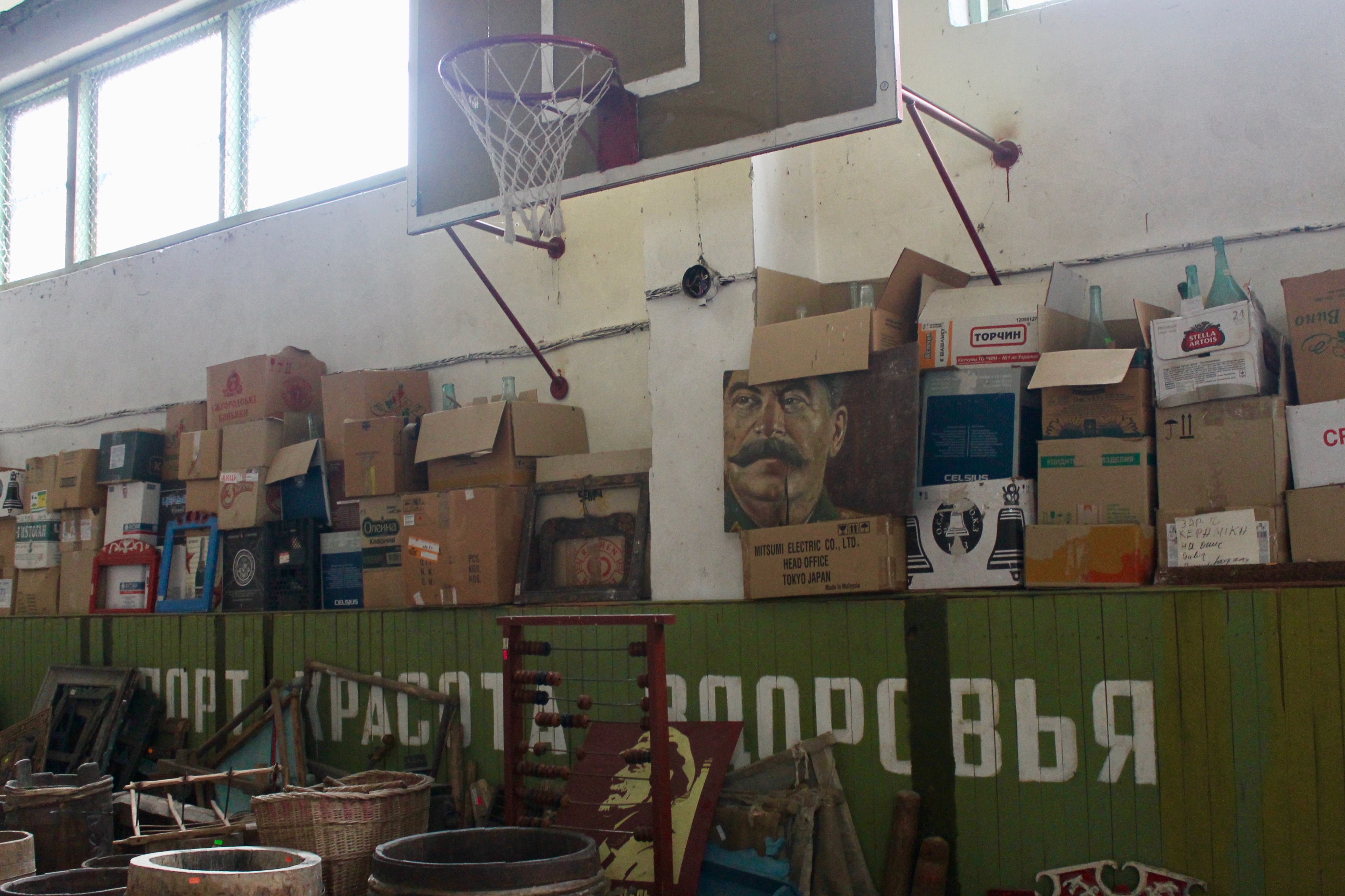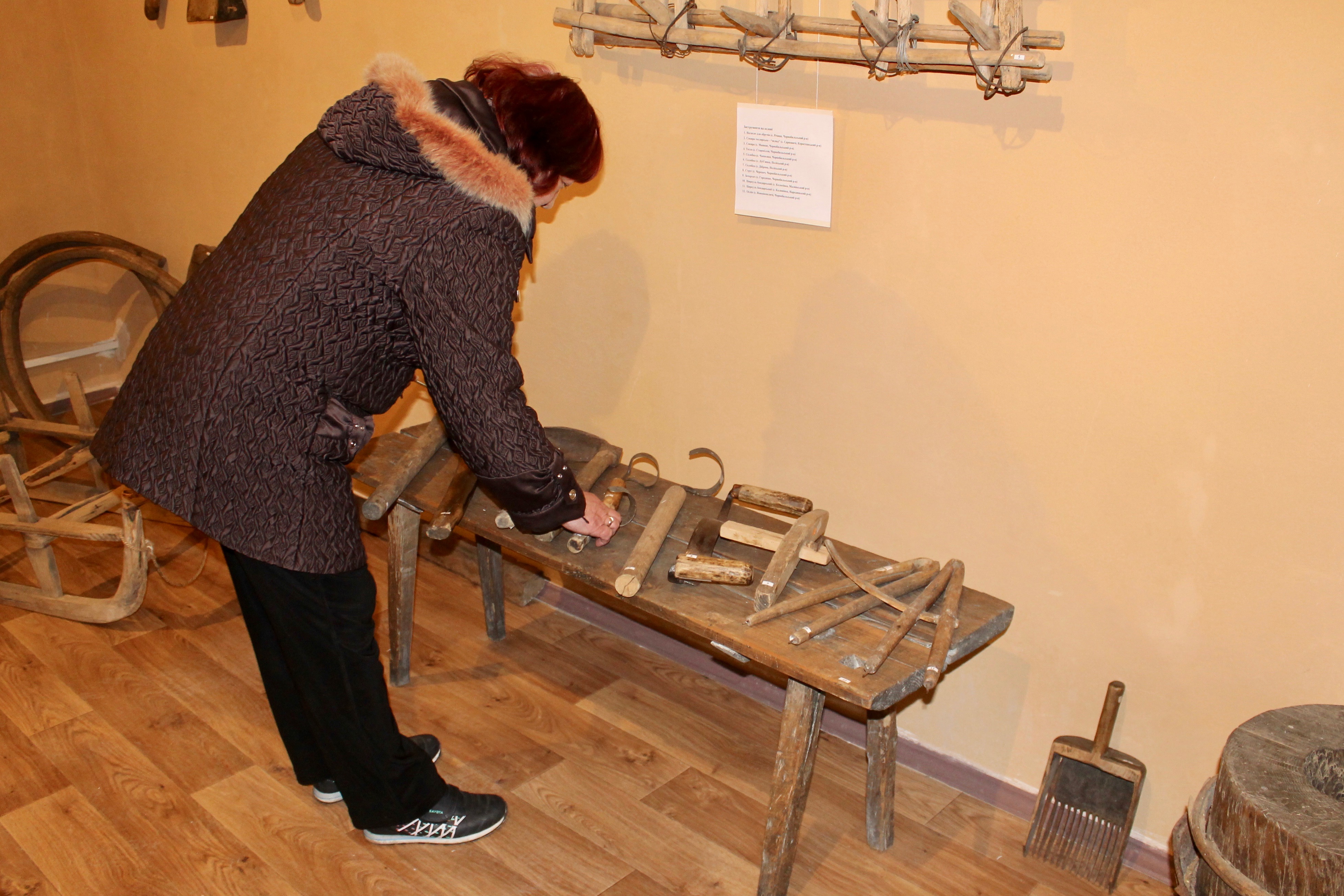CHORNOBYL, Ukraine – One would never guess that there is a museum inside the building. The only indication that it isn’t abandoned, like so many others in this city, is a colorful piece of paper that reads, in Ukrainian, “Memory of the Fatherland: Permanent Ethnographic Exhibition.”
There are two phone numbers on the bottom right-hand corner of the sign. If one phones them, at the other end of the line appears Lyubov Oshurkevych, the exhibition’s primary caretaker. She will come and unlock the door and, as she leads museum guests down a dim hallway of empty rooms, welcome them to Chornobyl – the city that gave its name to the nuclear power plant, 15.5 kilometers to the north, in 1977.
The exhibition, which opened in 2016, is located on Radyanska Street in the center of Chornobyl. The city, along with surrounding Ukrainian and Belarusian towns and villages, was evacuated after the April 26, 1986 power plant explosion, which became the biggest nuclear catastrophe in history.
But the exhibition is not about the accident.
On the second floor are four rooms that display baskets, ceramic vases, jewelry, national clothing, photographs, and agricultural tools – the items documenting the centuries-long history of Chornobyl – a history that is now completely overshadowed by the catastrophe.
Ukrainian ethnographers and archaeologists discovered these items in the months and years following the mandatory evacuation of tens of thousands of residents who lived within a 30-kilometer radius around the plant, an area now known as the Exclusion Zone.
Digging out history
Sergei Pereverzev is one of an estimated 250 professional archaeologists in Ukraine, and currently leads a team that works periodically in Chornobyl on behalf of the State Scientific Center for the Protection of Cultural Heritage from Technogenic Disasters. Rostislav Omelyashko, who directs the center, started collecting ethnographic items from abandoned homes throughout the Exclusion Zone shortly after the accident. His effort to preserve the history of the region advanced into archeological excavations in 2003, led first by archeologist Valeriy Manko, and then by Pereverzev.
Pereverzev is unaware, and entirely unbothered, that Australian Robert Maxwell claimed in 2016 to be the area’s first and only archeologist. His job, he says, is to dig.
He explains that, despite the region’s notoriety, the archeological discoveries are nothing unusual: bones, fishing hooks, hunting tools, jewelry, and various metal objects that indicate continuous human habitation since the 10th century. Christianity, he says, dates back to the 12th century, and Jews, who made up a significant portion of the city’s population in the late 19th and early 20th centuries, appeared much later.
Kyiv’s National Museum of Ukrainian History temporarily showcased the archeologists’ findings in 2015, a year before a grant from the European Union supported the permanent exhibition in Chornobyl. The funding helped the State Scientific Center for the Protection of Cultural Heritage renovate parts of a three-story building that before 1986 housed the city’s cast iron plant. The many ethnographic items that did not fit into the four rooms have been sitting in the city’s old gymnasium and Russian school, but the archeologists will soon move them to more recently renovated rooms in the building.
Pereverzev isn’t sure why tour agencies, which he says know about the public exhibit, bypass it on their way to Pripyat, often advertised as a “ghost town,” and what remains of the nuclear power plant.
Returning to Chornobyl
Chornobyl, unlike Pripyat, the town closest to the nuclear plant, is not an entirely abandoned city – although most current residents are not the native Chornobylans who were evacuated in early May of 1986. The city today is home largely to various Exclusion Zone administrators and employees, including checkpoint guards, police officers, firefighters, and construction workers.
Chornobyl also remains home to a dwindling number of re-settlers who returned illegally to live in the Exclusion Zone in the first few years following the evacuation. Some of these re-settlers, including Oshurkevych, are from surrounding villages but live in Chornobyl.
Oshurkevych, now 60, grew up one mile from Pripyat, which was built in the 1970s to house power plant employees. She worked as the secretary for the director of Pripyat’s housing projects and received an apartment in the new city in 1978. Pripyat’s nearly 50,000 residents were evacuated within two days of the accident.
Still working as a secretary, Oshurkevych returned to Chornobyl with her late husband in December 1987, leaving her son and daughter with her parents, who were evacuated to Minsk. She re-settled in a friend’s old house and, about a decade ago, started a new job with the State Scientific Center for the Protection of Cultural Heritage, watching over the artifacts.
Oshurkevych’s daughter, who now lives outside of Kyiv, wants her mother to move in with her family, but Oshurkevych refuses to abandon her home.
“I grew up here,” she says. “Your native land pulls you back.”
She takes her job as the exhibition’s sole caretaker seriously. Although the sign on the door says Monday through Thursday, Oshurkevych checks, dusts, and watches the artifacts most days between 9 a.m. and 2 p.m. She also opens the exhibition, a 15-minute walk from her house, on request.
Sometimes nobody comes for months at a time, but, occasionally, she welcomes visitors three, or even five times a week. Tourists cannot enter the Exclusion Zone without an official guide, and to visit the exhibition, a tour agency must list it as a program stop on the permit request submitted to the State Agency of Ukraine on Exclusion Zone Management.
Oshurkevych is very proud to have hosted French, Japanese, and Polish groups, and to show visitors that her native land is more than the site of the accident.
More information about the State Scientific Center for the Protection of Cultural Heritage from Technogenic Disasters can be found in Ukrainian on their website or Facebook page. To see the exhibition during a tour of Chornobyl, visitors should ask their selected tour agencies to call the center’s director Rostislav Omelyashko at +38-050-272-12-92.
Anna Khandros, whose family was among those evacuated from Chornobyl, learned about the exhibition and the archeologists while researching the region’s Jewish history. She has previously published a personal reflection on the topic here.




